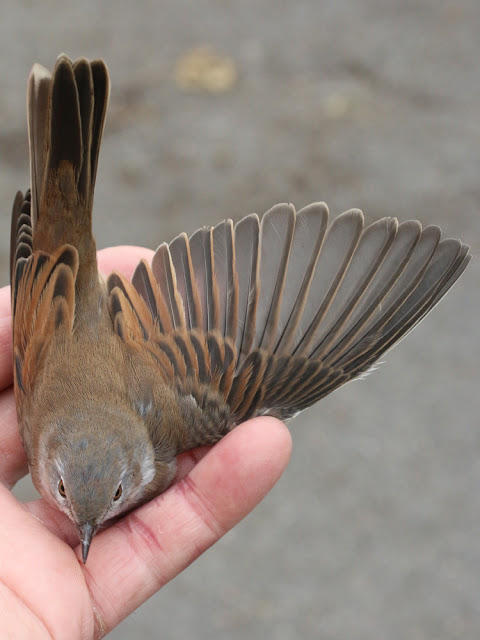A welcome increase in the volume of passage today although quality remained hard to come by. Grounded migrants were more conspicuous than of late but it was overhead passage that made up the bulk of the day's numbers, with a sample hour after dawn at the Bill returning totals of 1200 Meadow Pipits, 170 Linnets, 148 alba wagtails, 67 Siskins, 38 Chaffinches, 30 Dunnocks and 25 Skylarks, with 2 departing Kestrels and a Merlin amongst the tag-alongs. Grounded Blackcaps and Chiffchaffs were more numerous everywhere - although still far short of what might be hoped/expected at this time - but quality was very limited, with a lone Firecrest at the Bill and a Curlew Sandpiper at Ferrybridge hardly constituting a worthy return for plenty of effort. Offshore, 5 Arctic Skuas and 4 Balearic Shearwaters passed by at the Bill.
Our association with the Old World Webworm Hellula undalis goes back a long time since our first was at the Obs on the night of 30th September/1st October 1990, a period when there was some pretty amazing migration afoot: we only used to run one moth-trap at that time and on that morning it hosted the undalis - Barry Goater's then recently published pyralid guide only mentioned one previous British record - and a Dark Mottled Willow which was also the second for Britain; the Scarce Light Plume Crombrugghia laetus also in the trap was only about the tenth for Britain (and a couple of Crimson Speckleds were chivvied up from field edges on the same day - we'll always remember Bernard Skinner turning up the next day and telling us that: 'there'll be tens of thousands in Britain today', but he was crest-fallen by the end of the day after he'd failed to chivvy up one for himself!). Anyway, in the meanwhile we've trashed the planet to such an extent that these days undalis is almost to be expected during episodes of migration and our two from the Obs moth-traps this morning - that are the third and fourth on the island in the last few days - seem almost insignificant as we wait for the appearance of far more juicy rarities that we never even knew existed in 1990 © Martin Cade:


















































